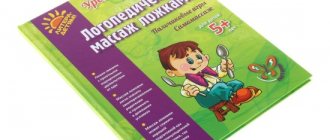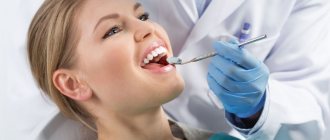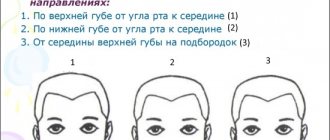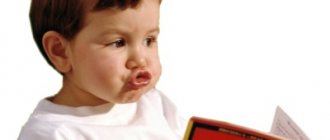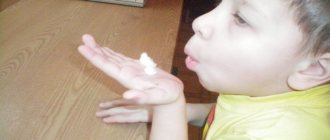The first sounds can be heard from babies at two months, and by the end of the first year of life, children can confidently pronounce syllables and whole words. However, it happens that kids lag behind their peers. The development of the speech apparatus is lame. To cope with this scourge, you should consult a doctor and regularly perform logomassage for children.
Even the most serious speech defects can be eliminated if you regularly perform speech therapy massage of the tongue.
Why do you need speech therapy massage?
Speech therapy massage allows you to relax or strengthen articulatory muscles and stimulate muscle sensitivity. The indication for the procedure is the presence of the following problems in the child:
- a short hyoid frenulum is one of the causes of dyslalia - speech disorders in which there is no damage to the central nervous system and the organ of hearing, so the main work is done with the articulatory apparatus;
- rhinolalia - a violation of sound pronunciation due to pathology of the nasal cavity and oropharynx;
- involuntary salivation, one of the reasons for which is loss of tongue muscle tone;
- voice disorder - the baby speaks quietly, but he may have a feeling of “coma” and heaviness when speaking;
- alalia - absence or underdevelopment of speech, caused by damage to the speech centers of the brain;
- dysgraphia - a violation of written speech;
- violation of muscle tone, both upward and downward, which are involved in sound pronunciation;
- stuttering of a neurotic nature;
- slurred speech.
The benefits of speech therapy massage
In case of the listed deviations, massage speeds up the establishment of the correct pronunciation of sounds and consolidates the results of the speech therapist’s work. It is effective in combination with other speech correction methods - breathing and articulation exercises, and voice work.
The advantage is simplicity and painlessness - speech therapy massage for children at home can be performed by any mother. The procedures have a positive effect on the nervous system and muscular system, improve blood circulation, increase the elasticity of muscle fibers, normalize speech breathing, reduce hypertonicity of the muscles of the speech apparatus, and increase the amplitude of articulatory movements. They also form active movements of the organs of articulation, improving their coordination.
Logomassage technique
The procedure is aimed at working the muscles located inside the mouth, including the lips, tongue, cheeks and even the throat. Speech disorders may be associated with underdeveloped or, conversely, overly toned muscles and uncoordinated movements of the tongue.
Surprisingly, the skills required to speak correctly are also useful for eating and drinking safely.
Logomassage can use both passive movements, when the specialist himself presses on the necessary muscles and ligaments, and active ones: the child himself performs the necessary movements. But in most cases, the doctor and his little client work together.
1. Lip work.
The child should alternately and drawlingly say the letters “o”, “u”, “e”, “i”. The massage therapist can help shape the lips into the appropriate shape.
It is better to use your index finger and thumb. You can also gently help your baby relax his cheeks. Parents without experience who plan to conduct logomassage at home are advised to first pronounce the sounds themselves and understand in which part of the cheeks strong tension appears. It is this area that the child needs to gently massage.
Between “singing” sounds, the baby can puff out his cheeks and lips. This will also help you relax and prepare for new exercises.
2. Tongue massage.
A muscle that is too weak or too tight interferes with articulation. Special tools can be used for massaging: hammers, scrapers, rollers. But at home it is better to do without additional accessories. To work on the language, you need to pronounce the so-called “front-lingual” sounds “tttt”, “dddd” with the child.
In this case, the baby should try not to touch the inner surface of the lips with his tongue. The tip should rest against the teeth.
3. Strengthening the cheek muscles.
In order for your baby to correctly pronounce hissing and whistling sounds, it is necessary to eliminate tension in the cheeks. To do this, knead the child's face along the jaw bone. You can gently press four fingers on the skin, moving from the nasolabial fold to the ears.
Active massage should still be left to a certified specialist who knows exactly which points to press on.
Massaging can tire the baby, so it is better to carry out the procedures at home in the form of a game.
For example, you can invite your child to blow soap bubbles.
Children love this kind of entertainment! But blowing bubbles teaches you to control your breathing. Also, the baby will have to constantly curl his lips into a tube, which is also one of the elements of logomassage.
If the sound effects aren't scary, buy a harmonica.
Playing a musical instrument “teaches” a child to control breathing, compress and unclench his lips. If you have problems with weak breathing, then the harmonica will help solve the problem and also increase the strength of your lips.
Those with a sweet tooth will love the “lick yourself” exercise.
You need to rub a little jam or condensed milk into the corners of your lips and ask your baby to lick himself thoroughly. The tip of the tongue should “walk” from side to side.
The exercises listed above are quite easy, but it is better to do them in a playful way. Children quickly get bored with monotonous movements, so it is better to sing songs, make faces and take funny photos at the same time as the logomassage. Game exercises can be repeated three to six times every day.
But remember that every child is unique and learns at their own pace, so progress may take a few days or a few months.
Contraindications
Speech therapy massage can only be performed if the child is in good general condition. It is contraindicated for:
- viral diseases that are accompanied by fever, cough, runny nose;
- stomatitis, gingivitis, sore throat and other diseases of the oral cavity;
- skin diseases - herpes, chicken pox, allergic rash;
- any diseases and conditions in which the baby’s well-being is impaired - teething or loss of baby teeth, fatigue;
- episyndrome;
- severe mental disorders.
In these conditions, it is better to wait with massage or abandon it completely. If a child suffers from colds or has an inflammatory process in his mucous membranes, you need to consult a doctor so that you can be prescribed treatment. Speech correction can begin after the condition has normalized.
Types of speech therapy massage
There are several types of speech therapy massage for children:
- Manual, or classic, is performed with hands, affecting various zones;
- The hardware is carried out using special instruments and devices, probes; at home you can replace them with a spoon;
- Point implies action on certain points;
- Self-massage, which the child performs independently with gymnastics.
Mom can perform a regular manual massage. Other types should only be performed by a specialist.
Conditions for holding
Speech therapy massage for children, as a rule, begins at the age of 4–5 years. According to indications, the course can be started earlier.
You need to create favorable conditions at home so that the sessions do not bring discomfort. The room should be quiet, warm and light. The massager's hands should be warm and clean. Make sure there are no scratches, inflammation, or foreign odors on your hand—perfume, aromatic oils, creams. Remove all jewelry. It is also necessary that the child is disposed to treatment and treats it calmly. It is unacceptable for the baby to cry and struggle.
The first speech therapy massage procedure for children can be short - no more than 5 minutes, especially if this is the first time for him. Then gradually increase the duration: after a week you can practice for 20–30 minutes. Focus on the age and reaction of the baby: if he becomes uncomfortable, uncomfortable, fear or nervous tension appears, it is better to interrupt the session. If you continue, despite the protest, next time he may refuse treatment altogether.
For good results, you need to practice regularly. Optimally 2 – 3 procedures per week. If you combine them with articulatory gymnastics and other activities, you will see the effect faster. Try not to take long breaks between sessions.
On average, a full course requires 10–20 sessions, sometimes more.
For massage you need to prepare a special oil or cream. Be sure to check for tolerance: apply a small amount of the product to the skin of your forearm and evaluate the reaction.
After treatment, wash your baby's face and rinse his mouth.
Face massage
A classic massage option that is suitable for children with any degree of dysarthria. Carry out this type of vibration therapy with gloves. Remove jewelry and trim your nails short. Repeat all movements 3-5 times. Increase the duration of the procedure gradually.
The movement pattern is as follows:
- The forehead is kneaded smoothly from the central point to the temples. Press into your head with 2-3 fingers. Press your palm tightly, but not too hard.
- From eyebrows to hair, move in waves with all your fingers. Stroking movements.
- Stretch the cheek muscles from the mouth to the temples, from the cheekbone down to the lower part of the face.
- Rub the muscles on the wings of your nose up and down smoothly.
- Stroke the nasolabial fold to the wing of the nose to the corners of the lips.
- Stretch your lips with vibration movements. Move both hands along the top of your lips, spreading your fingers in different directions (from the middle to the corners).
- The eyelids are warmed up with circular strokes without pressure. Move your fingers clockwise around the eyes, then back.
- Rub your chin.
- Stroke your ears.
If a child has facial asymmetry, a skew to one side, or muscles that are cramped, pay more attention to the affected side.
On a note! Be sure to include several facial massage techniques in your treatment for cortical dysarthria before kneading your tongue.
Massage technique at home
It is better to start massaging movements from the whole face so that he gets used to the situation and his tension goes away. Then gradually move on to the chin area and nasolabial fold. Movements are soft and smooth.
For lips
First, we rub our lips with our fingers, making circular movements from one corner to another. The direction on the lower and upper lips is different: from left to right, and from right to left. Then we pinch the lips and skin around the mouth, making circular movements with pressure. We finish the speech therapy lip massage with light spanks.
For language
The tongue is directly involved in sound pronunciation, so speech therapy massage of this part of the body is an important part of correcting speech disorders. You should achieve relaxation of the muscles of the upper and lower jaw, shoulder, neck, and tongue. If the baby has a pronounced gag reflex, then massage only the tip of the tongue.
The movements are:
- fixing the tip of the tongue between the fingers, moving it like a lever - up and down, back and forth;
- stroking the back of the tongue in a circle and lengthwise with the thumb, while the index finger is located below and supports it;
- stroking the lower surface of the tongue;
- vibrating movements by tapping and rocking the tongue;
- massaging the frenulum with finger movements up and down.
Stroke your baby's tongue with a cloth and a toothbrush. You can simply move them across your tongue, or you can “draw” letters.
If your baby has excessive salivation, use a napkin or handkerchief to prevent saliva from running off and irritating the skin.
For face
It will be useful to do a speech therapy massage of the entire face: massaging the forehead, cheeks, nose, and chin enhances the effect of the sessions. The procedure includes stroking, rubbing, kneading, and vibration of these areas. Do it exactly in this sequence.
The cheeks are massaged like this: we rub or knead the cheeks along the muscle fibers. The direction of movement is from the corners of the mouth towards the temples, then from the cheekbones to the lower edge of the jaw.
For the neck
Neck massage is performed before meals or two hours after meals. Please note that movements should be gentle. Strong pressure is unacceptable: large vessels and nerve trunks pass here. Perform turns and tilts of the neck to the right and left sides, forward and backward.
Light tapping movements of the cervical spine should be performed while lying on your stomach or sitting. Stimulation of this area not only develops speech, but also improves overall physical condition. After all, the work of the nervous system is activated, blood circulation improves, which means the brain is saturated with oxygen. But parents should act very carefully: they should not overexpose this area.
The procedure is as follows: movements from top to bottom along the neck, without affecting the spine. We operate with 2 or 3 fingers. Massage the trapezius muscle and shoulders.
Speech therapy massage of the neck also includes the ear area. This further stimulates the articulatory apparatus. The following exercises are effective: rubbing the earlobes, carefully pulling the earlobes down, kneading the tragus - a cartilaginous protrusion that is located in front of the ear canal.
Probe massage according to Novikova
Massage according to Novikova is a simple procedure. This method uses multiple probes with different shapes. They are used to have an effect on certain areas of the oral cavity - tongue, cheeks, lips, palate.
Before starting, a speech therapist or specialist examines the child. He must determine the extent of the damage. The specialist then decides how many sessions will be needed to correct the problem.
How to perform
When prescribing a course of therapy, it is important not to miss sessions and attend them all. The course of treatment can last 2-3 weeks. Every 40-50 days the course is repeated again. In some simple cases, one course may be required.
Before the procedure begins, the speech therapist allows the child to see the instrument. This way the child will not develop fear. If the atmosphere in the office is pleasant, the speech therapist carries out the procedure carefully and carefully, the child gets used to the procedure the first time. Several probes are used, each with their own purpose.
Fork probe
Use a sharp tip to prick the surface of the tongue, cheeks, and lips. This provokes muscle contractions. Movements should be short. At the same time, active muscle contraction occurs. The movements are neat and short. The probe is installed at the desired point and a rocking motion is made. After this, the tool is rotated at one point for 5 seconds.
"Eight"
The probe is intended for lips, cheeks, tongue. The muscles of the tongue must be rubbed up and down with movements similar to loops, pressing on it.
Probes large, medium and small sleds
They differ in their size, area of influence, and pressure force. These devices stimulate the fibers of the tongue, cheeks, and lips.
Hatchet
A speech therapy massage of the lips, tongue, and cheekbones is performed. The muscles of the tongue are pressed and sliding movements are carried out along them. This device normalizes muscle tone and affects mobility.
Cross
This tool is designed to work with a child's language. When pushing movements, contractions of his muscles occur.
Pusher
It is necessary to alternate pressure and relaxation of the tongue. Each phase lasts at least 5 seconds.

